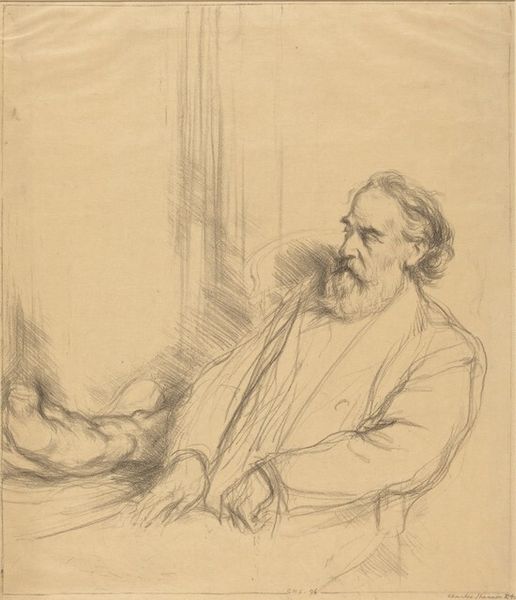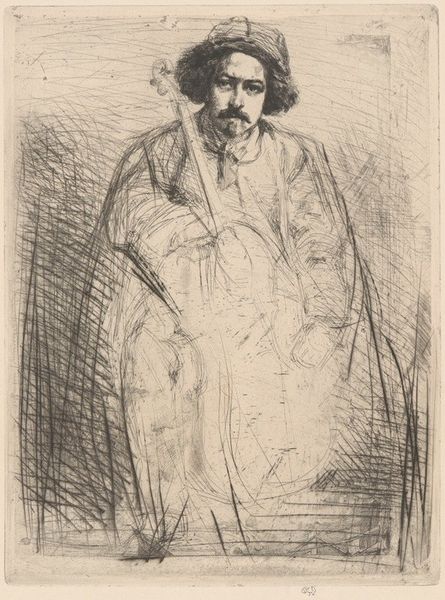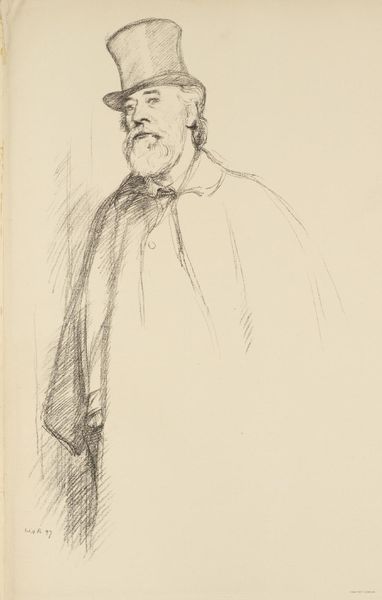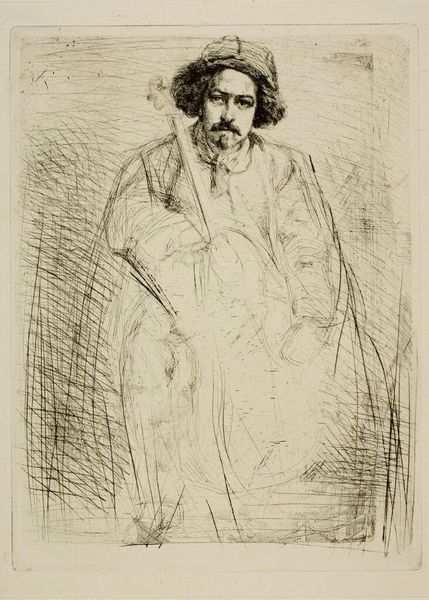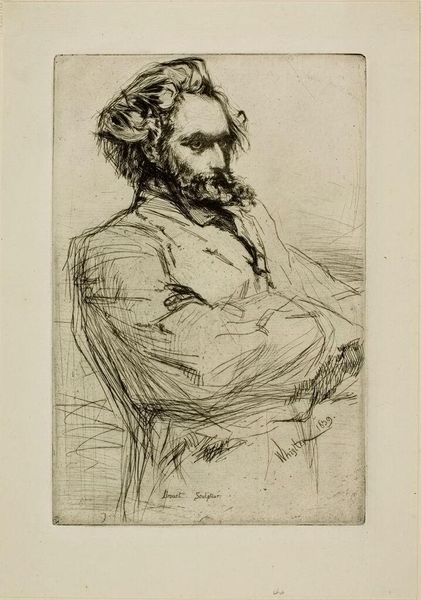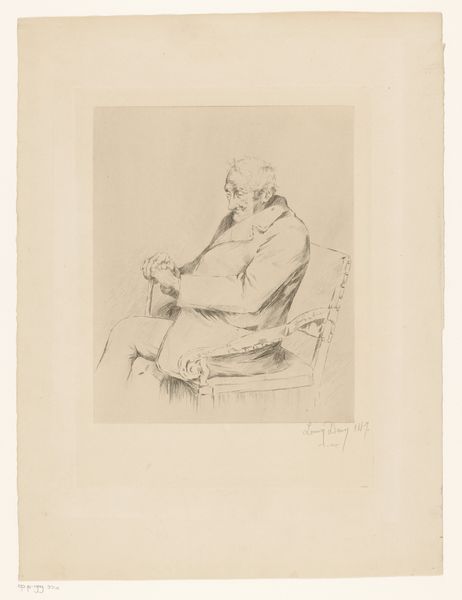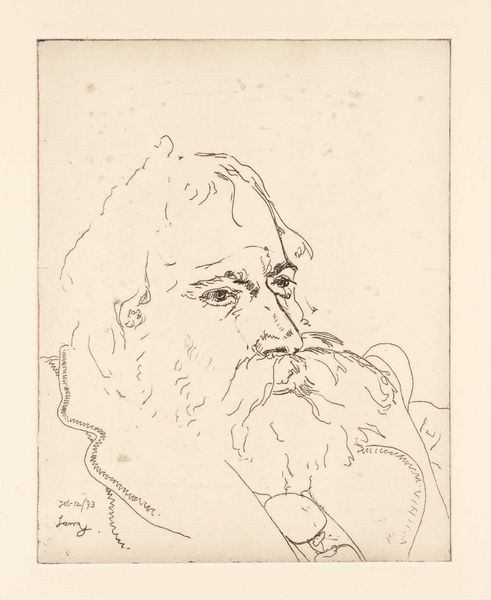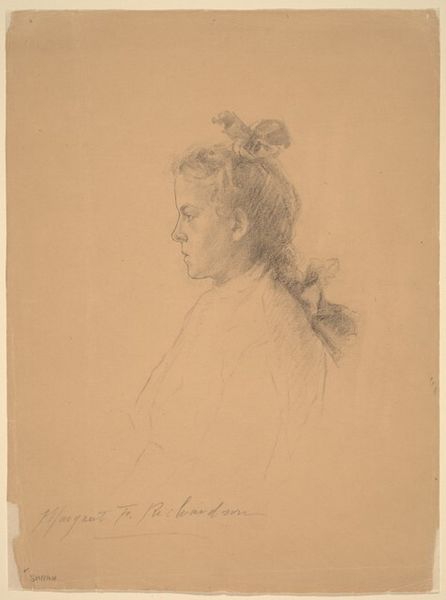
#
pencil drawn
#
amateur sketch
#
facial expression drawing
#
light pencil work
# print
#
pencil sketch
#
portrait reference
#
pencil drawing
#
animal drawing portrait
#
portrait drawing
#
pencil work
Dimensions: sheet: 45.7 x 28.3 cm (18 x 11 1/8 in.)
Copyright: National Gallery of Art: CC0 1.0
Editor: Here we have William Rothenstein’s "Mauritz Rothenstein," a print from 1896. It looks like a quick pencil sketch. I’m struck by the very evident process. What is your take on this piece? Curator: I'm interested in the context of the *making* of this print. This looks like an informal portrait, rapidly executed. What kind of labor went into this, compared to a more finished painting, or even a formally commissioned portrait? And what was the perceived value of that labor? Editor: I see what you mean. The quickness implies less "preciousness" somehow, right? So, are you suggesting the medium reflects a social attitude about who or what was worthy of serious artistic effort versus a more casual approach? Curator: Exactly. Consider the rise of printmaking at the time. Suddenly, images became more readily accessible, reproducible. Was Rothenstein democratizing portraiture by using a ‘lesser’ medium, like this print, or was it merely a preparatory study meant for something ‘greater’? What's your sense? Editor: It's like he's blurring those lines, isn't it? It feels unfinished, yet somehow complete in its capture of Mauritz. So, it challenges our notions of "finished art," potentially elevating the sketch, the *process*, itself. Curator: Precisely! How does this rapid method impact the relationship between the artist, the sitter, and the eventual consumer of the print? Was it quicker, cheaper, and did it allow for a more direct and personal connection than, say, oil on canvas? Editor: That's fascinating. I never thought about the material implying such a deep conversation about class, access, and even artistic intent. Curator: By looking closely at the material and the methods, we reveal the underlying economic and social dialogues embedded in art. Editor: Definitely gave me a lot to consider today. Thanks for sharing.
Comments
No comments
Be the first to comment and join the conversation on the ultimate creative platform.

